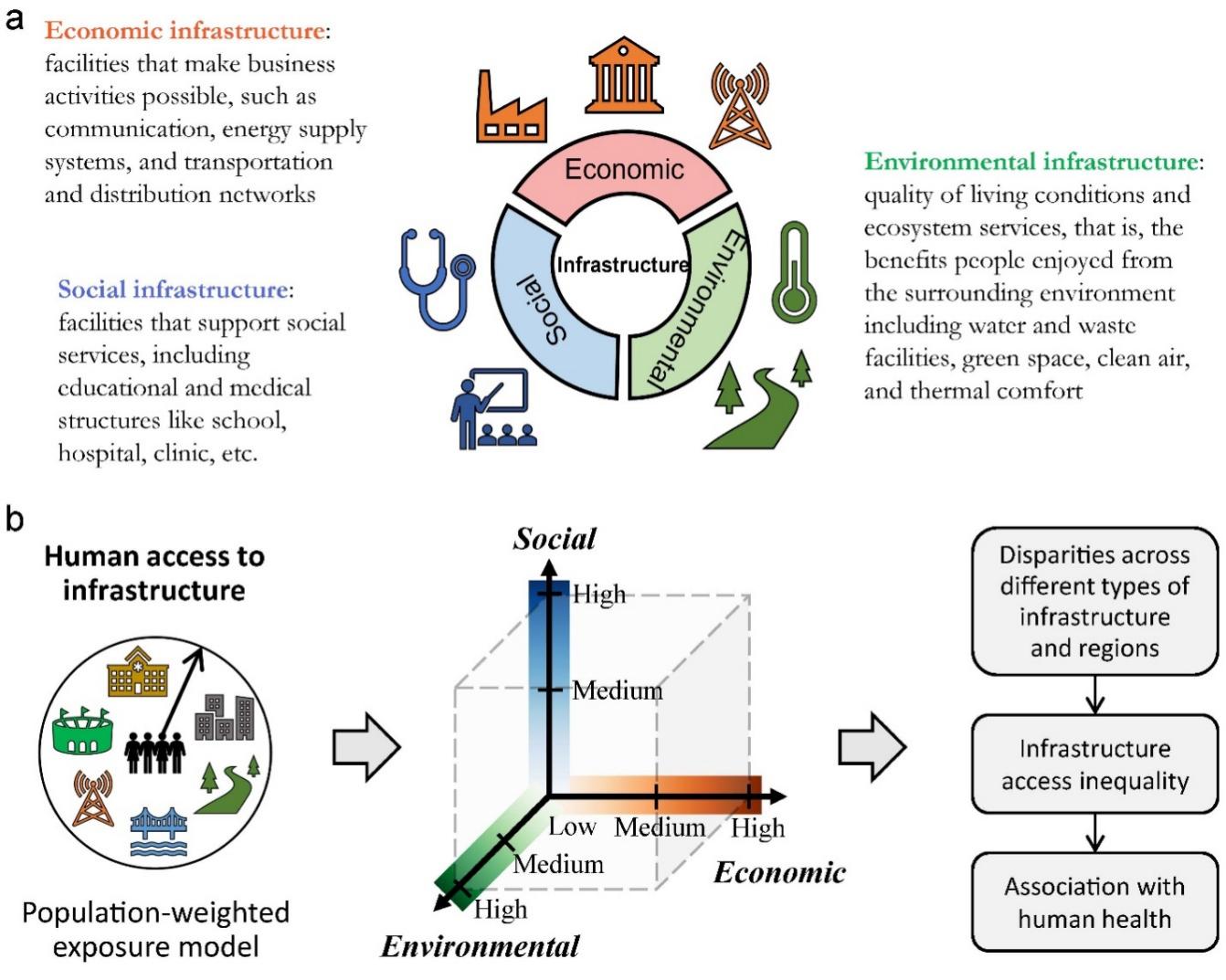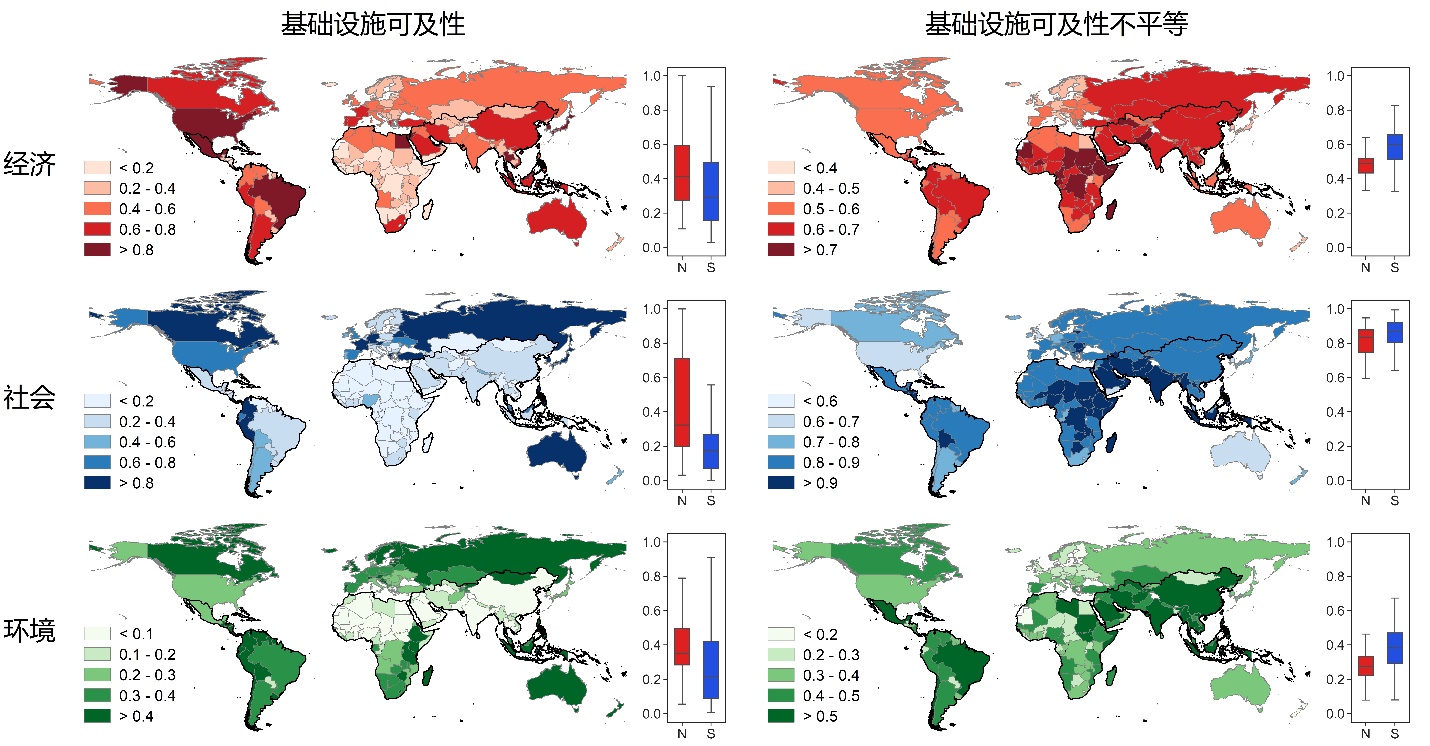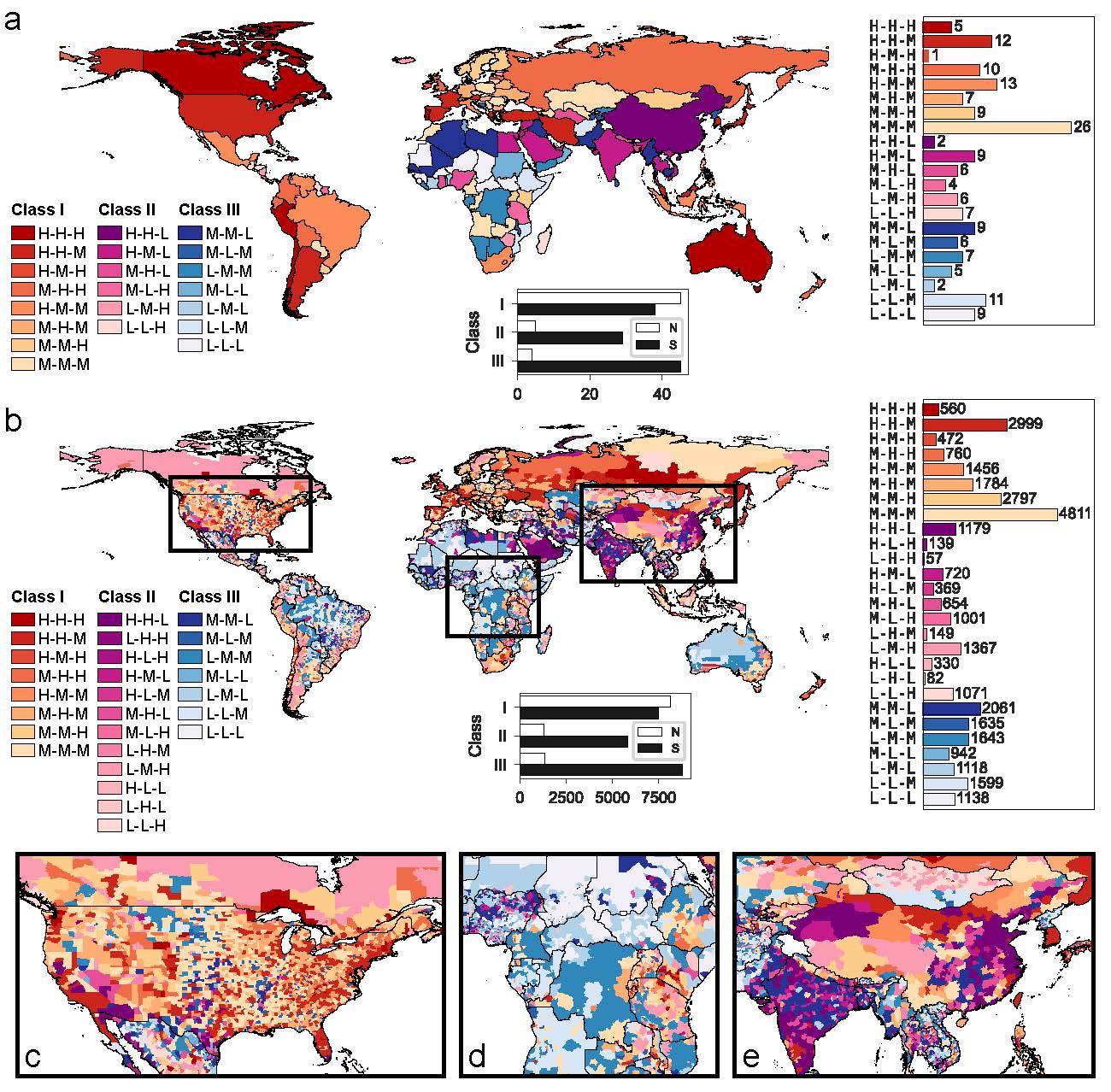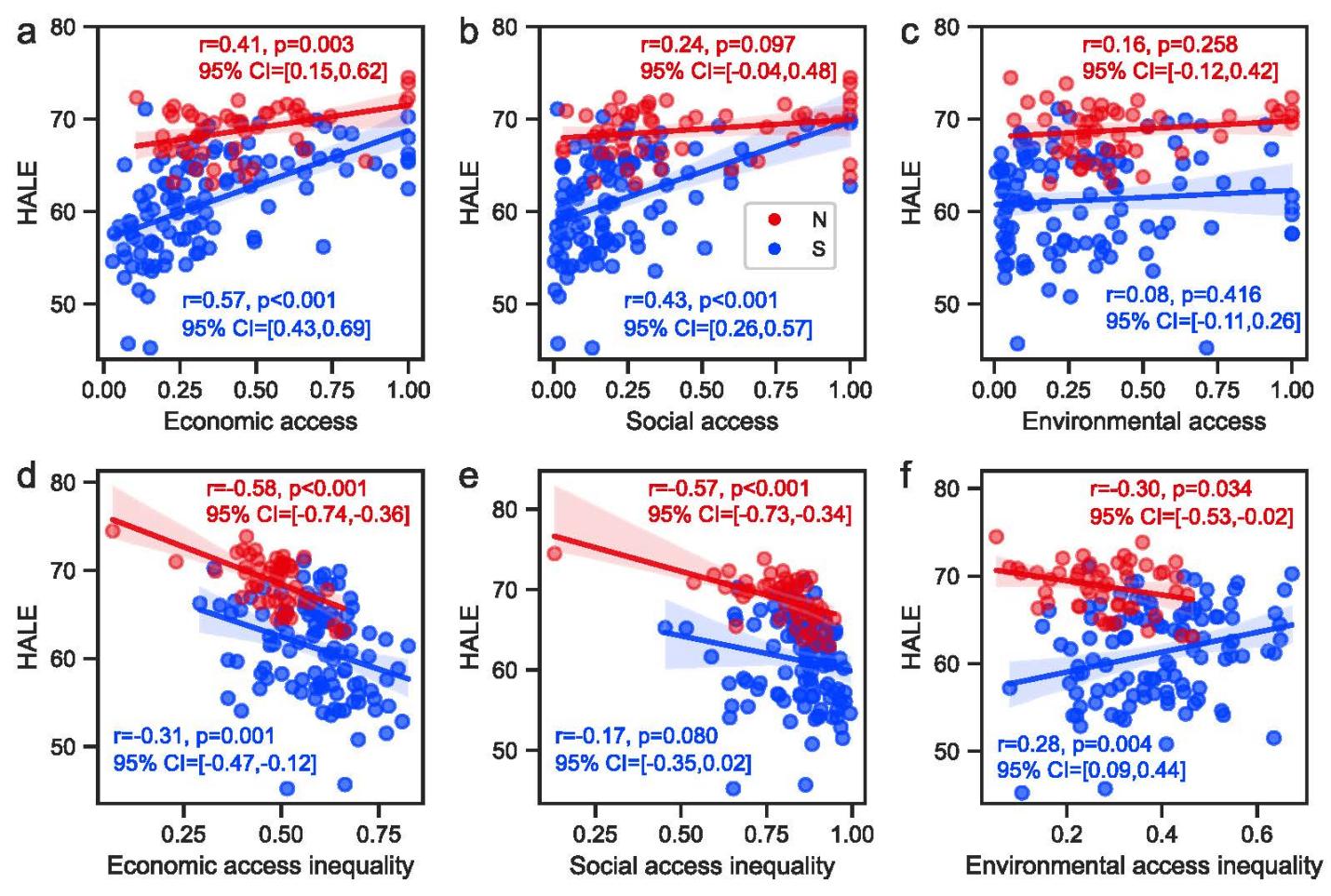Infrastructure serves as the cornerstone of social development. Ensuring fair access to and use of infrastructure for residents is crucial for achieving sustainable development and promoting public health. However, research on the relationship between global infrastructure and human health remains significantly insufficient.
To fill this gap, the research team led by Professor Xu Bing from the Department of Earth System Science (DESS) at Tsinghua University, in collaboration with multiple domestic and international institutions, developed a global gridded database covering three categories of infrastructure—economic, social, and environmental. By integrating a population-weighted exposure model with mixed-effect regression methods, the research group systematically evaluated disparities in infrastructure access and their impacts on human health across 166 countries worldwide (Fig. 1). In this study, infrastructure is defined as the physical systems and facilities supporting economic and social operations; infrastructure access refers to the ability of populations to reach and use surrounding infrastructure; and its inequality reflects spatial differences in this ability across geographic areas.

Fig. 1 Conceptual framework and research design. (a) Definition and classification of economic, social and environmental infrastructure in this study. (b) Overview of the research design.
The study revealed significant equity disparities both among different infrastructure types and across regions. Infrastructure access in Global South countries is only 50% to 80% that of the Global North, while their inequality levels are 9% to 44% higher (Fig. 2). Over 80% of Global North countries have infrastructure access above the average, with minimal differences across the economic, social, and environmental dimensions, demonstrating a "win-win" pattern. In contrast, 66% of Global South countries exhibit moderate or low infrastructure access, with substantial disparities across the three dimensions (Fig. 3).

Fig. 2 Country-level distributions of human access to economic, social and environmental infrastructure and degrees of inequality. Box plots illustrate the differences among countries of the Global North (N) and Global South (S).

Fig. 3 Composite maps of overall infrastructure access levels at the country (a) and county (b) scales. nd environmental infrastructure access, respectively. (c–e) Zoomed composite maps of county-level infrastructure access in North America, Africa and Asia.
The study also found that infrastructure access and its inequality are closely associated with health-adjusted life expectancy (HALE), with differences observed between Global North and South countries. Overall, infrastructure access is positively correlated with HALE, while increased infrastructure access inequality is associated with decreased HALE (Figure 4). Among them, economic infrastructure has the most significant impact: a 10% increase in its access inequality is associated with an average reduction of approximately 1 year in HALE.

Fig. 4 Scatter plots between infrastructure factors and health outcomes in countries in the Global North (N) and Global South (S).
The research further pointed out that promoting fair and collaborative development of economic, social, and environmental infrastructure is a key pathway to improving population health. The comprehensive assessment framework for infrastructure access constructed in this study provides scientific guidance for optimizing infrastructure spatial layout, advancing sustainable development, and enhancing public health.
Related findings were recently published in Nature Human Behavior under the title "Inequality in infrastructure access and its association with health disparities".
Tu Ying, a Class 2019 doctoral graduate from Tsinghua DESS (currently a postdoctoral researcher at Cornell University), is the first author of the paper. Professor Xu Bing from Tsinghua DESS, Associate Professor Chen Bin from the University of Hong Kong, and Assistant Professor Liao Chuan from Cornell University are the co-corresponding authors. Co-authors also include Research Assistant Professor Wu Shengbiao, Assistant Professor An Jiafu, Professor Lin Chen, and Chair Professor Gong Peng from the University of Hong Kong, Professor Chen Bin from Beijing Normal University, and doctoral student Wei Hong from Tsinghua DESS. This research was supported by projects such as the National Key Research and Development Program, the Major Research Plan of the National Natural Science Foundation of China, the Strategic Research and Consultation Project of the Chinese Academy of Engineering, and the Open Research Program of the International Research Center of Big Data for Sustainable Development Goals.
Full-text link: https://www.nature.com/articles/s41562-025-02208-3
Written by Tu Ying
Edited by Wang Jiayin
Reviewed by Geng Rui